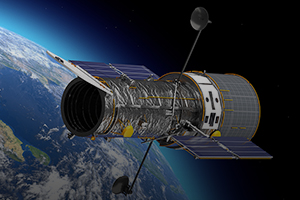Space Telescope

In a collaboration between NASA, the European Space Agency (ESA) and the Canadian Space Agency, the largest and most powerful telescope ever built was launched from French Guiana on Christmas Day 2021. Known as the James Webb Space Telescope (after a former NASA administrator during the Apollo program in the 1960s), it will be capable of studying planets within our own solar system as well as those that orbit other stars.
The Webb Telescope will far exceed the capabilities of the existing Hubble Telescope by imaging and analyzing wavelengths in the infrared spectrum as well as the visible range. But in order to detect the faint heat signatures of stars that formed billions of years ago, the infrared observatory will need to operate at temperatures within about 50 degrees of absolute zero (-370 degrees Fahrenheit or -223 degrees Celsius). It will orbit the sun about one million miles “behind” Earth at a location known as Lagrange 2 (L2). A sunshield, about the size of a tennis court, will shield the mirror and provide an equivalent Sun Protection Factor (SPF) of about a million. The mirror itself is made up of eighteen hexagonal gold-plated segments that must be aligned to within nanometers (1/10,000th the diameter of a human hair) to function as a single optical device.
It will take a month for the Webb Telescope to reach its operational orbit, and about six months to cool down to its cryogenic operating temperature, before it can begin imaging cosmic features from the formation of galaxies to massive black holes. On-board spectroscopy will also be able to analyze their physical and chemical properties to compare with known elements. If all goes as planned, the revolutionary telescope will be able to detect light from a time when the universe was only 200 million years old while also providing valuable data and information about our own solar system.
For information: James Webb Space Telescope; Website: https://www.jwst.nasa.gov/index.html